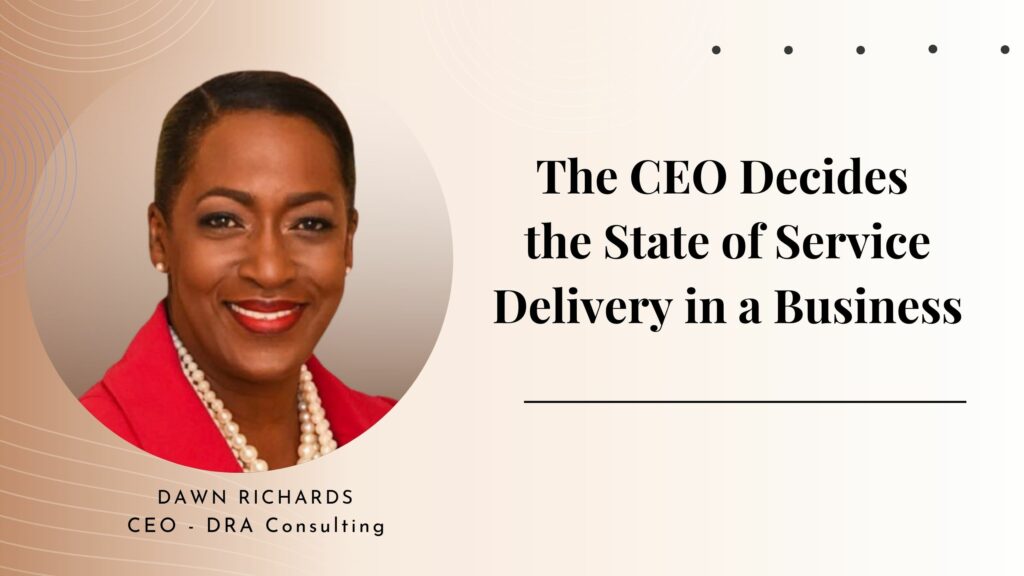Heavy is the head that wears the crown. The crown is heavy because effective decision-making rises and falls on the wisdom of the head that’s wearing the crown. This not only applies to the monarchy, it’s relevant to all heads of operation, like chief executive officers and other members of the c-suite.
Because the chief executive officer is the primary load-bearing member of the leadership team, when I look at the state of service in a business, my perception of the chief executive officer, as the “chief,” starts to take shape. Now, let me acknowledge that not all “chiefs” carry the same heavy influence over decision-making, some chiefs are led by the “true” (informal) chiefs and, in other cases, by the braves.
One of the first acts of influence to be asserted by the chief executive officer, is to ensure that there are no competing views of what customer success, customer experience and service delivery means to the business.
This brings me to the point of how a chief executive officer can influence the creation of a business universe that intersects at the sweet spot with the customer’s universe.
One of the first acts of influence to be asserted by the chief executive officer, is to ensure that there are no competing views of what customer success, customer experience and service delivery means to the business. Far too often in businesses, individuals from the c-suite to the junior staff, are allowed not only to hold, but to promulgate their own personal views on how customers should be served. Disallowing this fundamental level of dissent, without using draconian measures, is the first order of business. There has to be a single voice and a single vision of service excellence, across the business.
Another act of influence is ensuring the existence of specific service delivery standards across all omni-channels and that the business is compliant with these standards at all times. A question that I ask all clients is, “What are your service delivery standards?”
Another act of influence is ensuring the existence of specific service delivery standards across all omni-channels and that the business is compliant with these standards at all times.
If a business cannot produce its service delivery standards and the associated customer experience measurement metrics, then let me say here, that, save for some glorious intervention, customer centricity will be a perpetual “talking point.” The only way that a business can determine if it’s hitting the mark with customer success, is if the customer “says so” and this requires the measurement of delivery against service standards and customer expectations, across all customer contact channels.
Another compelling influence marker resides in whether the chief executive officer is willing to hold himself or herself, as well as all members of the c-suite “fully accountable” for the state of service delivery and customer experience in the business. The effective “chief” will not look to ascribe blame for service delivery problems to line or operational levels, but will start with the assumption that the root cause resides “at the top.” As a first step, he or she will begin the hunt with a close look to see how c-suite decisions are rippling across the business, to the detriment of the customer.
Another compelling influence marker resides in whether the chief executive officer is willing to hold himself or herself, as well as all members of the c-suite “fully accountable” for the state of service delivery and customer experience in the business.
To chief executive officers who impact customer success directly, customer intelligence is gold. They want to know how customers found the business. Was it through happenstance, word of mouth referral, influencer promotion or cold searching through a search engine? They want to know as well, how many customers want to call in for technical support, versus how many are self-helpers and want to bypass calling the business and go to a website to source product and service information. Additionally, they want to know about the efficacy of the payment solutions that the businesses offer. Are the solutions adequate; is it time to go contactless?
I want to emphasize the importance of the wisdom associated with asking the right questions and to add a cautionary footnote about asking the wrong questions. This calls to mind a story that I read about a restaurant owner hiring a chef who had a reputation for producing grand dishes. The chef was a failure because he was accustomed to cooking for small groups, not running a fast-paced kitchen, catering to thousands of diners. The key hiring question was limited to, “Is the chef a superb cook?” Yes. The question of, “Can he cook for large groups?” was not tabled. There’s a certain skill of enquiry attached to arriving at the right landing points. It’s about knowing the right questions to be posed.
The effective “chief” will not look to ascribe blame for service delivery problems to line or operational levels but will start with the assumption that the root cause resides “at the top.”
One of the most powerful ways that a chief executive officer can influence customer experience, is by making continuous reinvention a way of life in the business. Can you imagine the breakthroughs that can be generated in service excellence by asking the question, “Where do we need to reinvent?”
From where I’m standing, the possibilities appear to be limitless.

